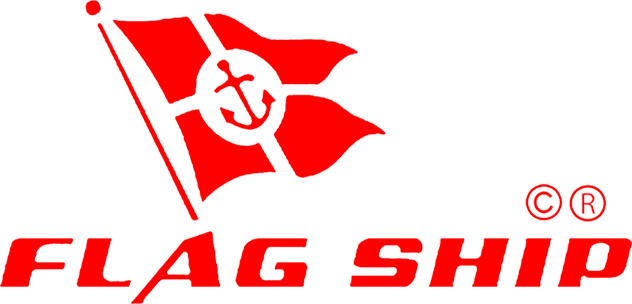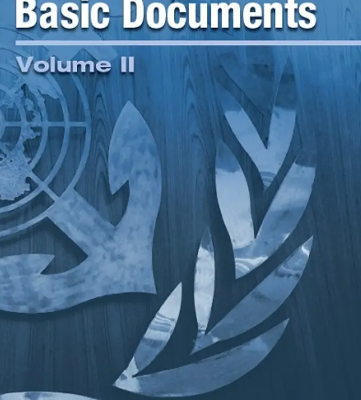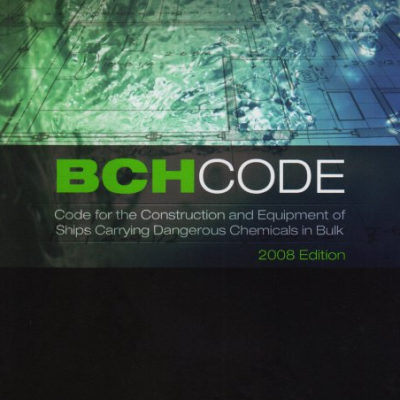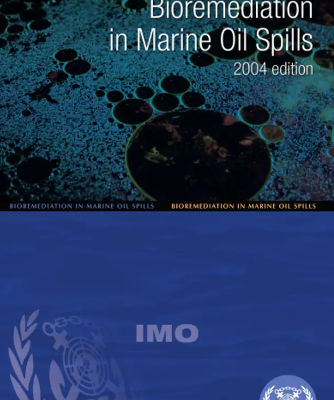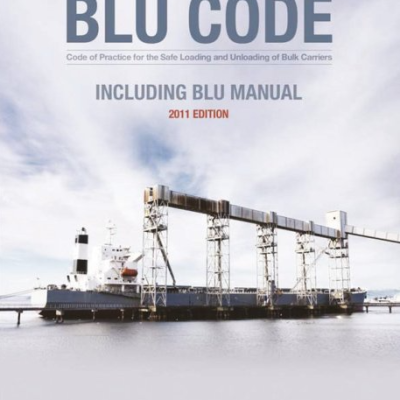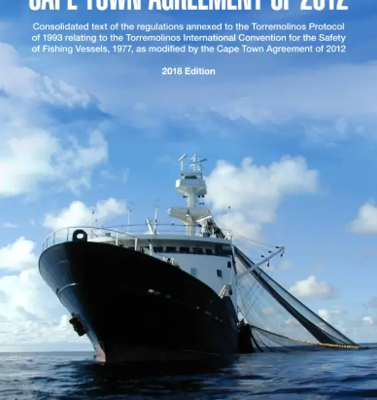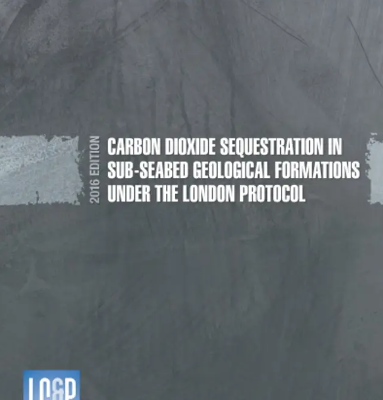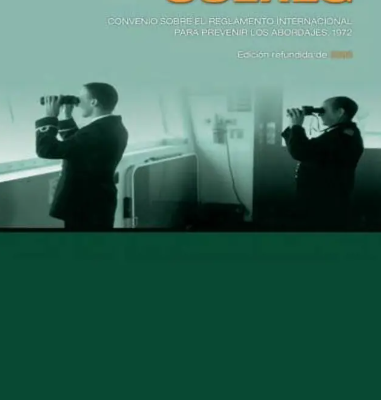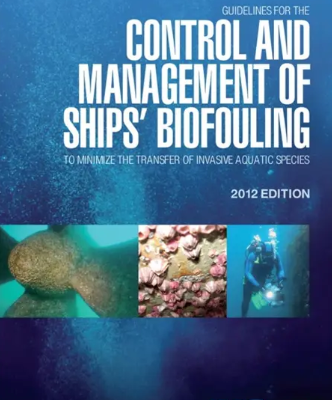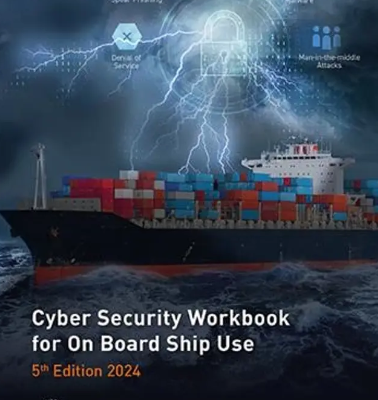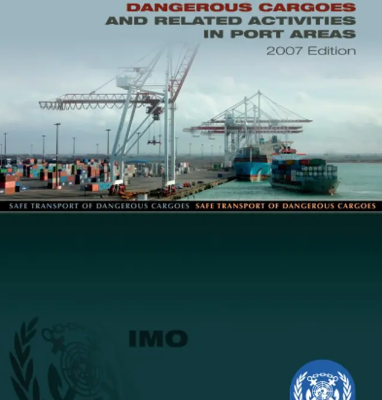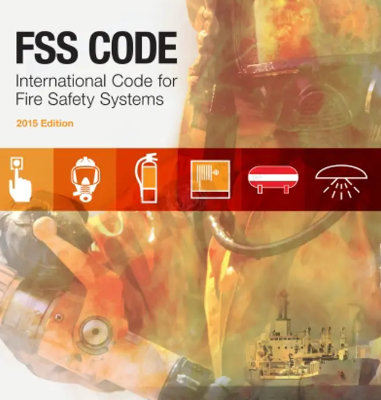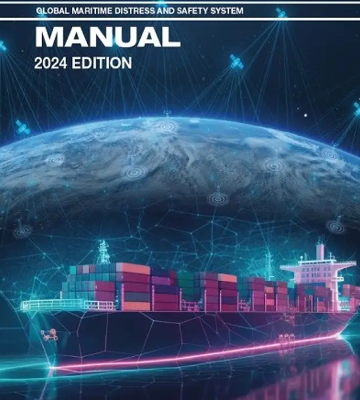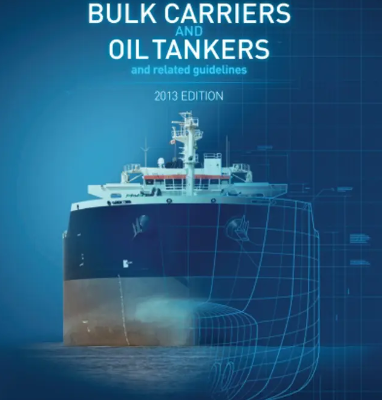NAUTICAL CHARTS & PUBLICATIONS
IMO & Safety Signs
A Guide for Correct Entries in the ORB Part I – Machinery Space Operations
-
EDITION : 4th,2021
-
PUBLISHER: INTERTANKO
-
LANGUAGE: ENGLISH
-
This is a guide to completion of the Oil Record Book (Part I – Machinery space operations) to ensure compliance with IMO requirements.
-
It provides instruction on correct record keeping, listing the types of operation that must be recorded and highlighting common failures and errors.
-
It also includes Flag Administration requirements and is structured to facilitate integration in the document management system of any individual member of INTERTANKO.
-
This fourth edition of Part I of the ORB retains the structure of the previous edition and contains: Instructions and interpretations on how to properly record all related operations in accordance with MARPOL 73/78, Annex I, Regulation 17. A list of operations to be recorded. Frequently found failures or mistakes. Detailed examples for all related operations.
A Guide for Correct Entries in the ORB Part II – Cargo/Ballast Operations
-
EDITION : 2nd,2021
-
PUBLISHER: INTERTANKO
-
LANGUAGE: ENGLISH
-
This publication provides guidance on proper and consistent completion of the Oil Record Book (Part II – Cargo/Ballast Operations) for oil tankers, as stipulated by Regulation 36 and Appendix III of Annex I of MARPOL 73/78.
-
It sets out instructions and general requirements for making entries in the ORB Part II and lists the items that must be recorded.
-
It also contains example entries for commonly used cargo/ballast operations.
-
It provides simple and clear advice and guidance for making entries in the ORB Part II with the aim of: Ensuring compliance with the relevant MARPOL Annex I requirements Facilitating and simplifying the onboard work of the responsible officers and the Master Ensuring uniform and consistent ORB Part II recordkeeping that is aligned with and compatible with other shipboard logbooks and records
Ballast Water Management, 14th Edition – Understanding the regulations, treatment technologies and practical information
-
EDITION : 14th,2023
-
PUBLISHER: Capt. Nadeem Anwar PhD & Witherby
-
LANGUAGE: ENGLISH
-
This 14th edition has been fully revised to reflect current requirements in the management of ballast water since ratification of the BWM Convention.
-
To assist ship owners with compliance, it sets out national and international ballast water legislation as well as Port State Control and ship administration requirements.
-
It includes practical considerations relating to system selection, installation/retrofitting, onboard operation, maintenance, monitoring and reporting.
Basic Documents
-
VOL I
-
EDITION : 5th,2023
-
PUBLISHER: IMO
-
LANGUAGE: ENGLISH
-
SKU: KD001E
-
This edition incorporates amendments to the Convention on the International Maritime Organization up to December 2021.
-
It also includes amendments to the Rules of Procedure of: the Assembly up to December 2021;the Council up to November 2021;the Maritime Safety Committee up to June 2017;the Legal Committee up to April 2017;the Marine Environment Protection Committee up to July 2017;the Technical Cooperation Committee up to July 2017;the Facilitation Committee up to June 2018; and Meetings under the London Convention, 1972 and the 1996 Protocol to the London Convention up to November 2018.
Basic Documents
-
VOL II
-
EDITION : 4th,2022
-
PUBLISHER: IMO
-
LANGUAGE: ENGLISH
-
SKU: KC007E
-
is a compendium of basic documents on the International Maritime Organization (IMO) and its Training Institutions and Regional Centre.
BCH Code
-
TITLE: The Code for the Construction and Equipment of Ships Carrying Dangerous Chemicals in Bulk
-
EDITION : 4th,2008
-
PUBLISHER: IMO
-
LANGUAGE: ENGLISH
-
SKU: KC772E
-
This publication contains the Code for the Construction and Equipment of Ships Carrying Dangerous Chemicals in Bulk (BCH Code) and information related to that Code. The Code was originally adopted in 1971 and was altered by a series of amendments between 1972 and 1983 before an amended version was adopted by the Marine Environment Protection Committee (MEPC) in 1985 and by the Maritime Safety Committee (MSC) in 1986. There have been further amendments, the most recent of which were adopted by the MEPC by resolution MEPC.144(54) in March 2006 and by the MSC by resolution MSC.212(81) in May 2006. These came into force on 1 August 2007.
-
This edition also includes amendments which were adopted by the MEPC by resolution MEPC.41(29) which became effective on 3 February 2000; by resolution MEPC.56(33) which became effective on 1 July 1994; by resolution MEPC.70(38) which became effective on 1 July 1998; by resolution MEPC.80(43) which became effective on 1 July 2002 and by resolution MEPC.91(45) which also became effective on 1 July 2002. Chapters VI and VII of the BCH Code are now much shorter than in earlier editions because they refer the user to chapters 17 and 18 of the IBC Code.
-
Under the provisions of Annex II of the International Convention for the Prevention of Pollution from Ships, 1973, as modified by the Protocol of 1978 relating thereto (MARPOL 73/78), chemical tankers constructed before 1 July 1986 must comply with this Code; those built on or after that date must comply with the International Code for the Construction and Equipment of Ships Carrying Dangerous Chemicals in Bulk (IBC Code) for the purposes of MARPOL 73/78 and the International Convention for the Safety of Life at Sea (SOLAS 74).
Bioremediation in Marine Oil Spills
-
EDITION : 1st,2004
-
PUBLISHER: IMO
-
LANGUAGE: ENGLISH
-
SKU: E584E
-
The aim of these guidelines is to provide users with clear criteria to enable them to evaluate the circumstances in which to consider the use of bioremediation for shoreline clean-up. These guidelines are not intended to address the treatment of waste generated oil spills.
-
They contain a summary of the most important bioremediation processes and decision-making criteria.
-
The various strategies are discussed and some suggestions as to how to monitor the effectiveness and check for possible adverse consequences of the technique are made. Suggestions for further reading are also provided for readers who wish to study this subject in greater detail.
BLU Code including BLU Manual
-
EDITION : 2nd,2011
-
PUBLISHER: IMO
-
LANGUAGE: ENGLISH
-
SKU: KA266E
-
This combined edition of the BLU Code and BLU Manual incorporates all amendments adopted up to May 2010. It includes amendments to the Manual on the loading and unloading of solid bulk cargoes for terminal representatives (MSC.1/Circ.1356) and additional considerations for the safe loading of bulk carriers (MSC.1/Circ.1357).
BWM Convention and BWMS Code with Guidelines for Implementation
-
EDITION : 2nd,2018
-
PUBLISHER: IMO
-
LANGUAGE: ENGLISH
-
SKU: IA621E
-
The International Convention for the Control and Management of Ships’ Ballast Water and Sediments, 2004 (BWM Convention), is concerned with preventing, minimizing and ultimately eliminating the risks to the environment, human health, property and resources arising from the transfer of harmful aquatic organisms and pathogens, through the control and management of ships’ ballast water and sediments. The BWM Convention also aims to avoid unwanted side-effects from that control and encourages developments in related knowledge and technology. The 2018 consolidated edition aims to provide an easy and comprehensive reference to the up-to-date provisions and Unified Interpretations of the Articles and Annex of the BWM Convention.
Cape Town Agreement of 2012
-
EDITION : 2nd,2018
-
PUBLISHER: IMO
-
LANGUAGE: ENGLISH
-
SKU: IA793E
-
The Cape Town Agreement of 2012 on the Implementation of the Provisions of the Torremolinos Protocol of 1993relating to the Torremolinos International Convention for the Safety of Fishing Vessels, 1977 (the Agreement) was adopted by the International Conference on the Safety of Fishing Vessels, held from 9 to 11 October 2012 in Cape Town, South Africa, under the auspices of the International Maritime Organization (IMO), as the result of a strenuous work and intensive discussions over a five-year period.
-
The safety of fishers and fishing vessels forms an integral part of IMOs mandate, however, the fishing industry, from a global perspective, does not have an acceptable safety record; and, while there may be a number of factors that have contributed to this, there can be no doubt that the lack of an effective internationally binding regulatory regime has played a significant part in the status quo. In this context, neither the Torremolinos International Convention for the Safety of Fishing Vessels, adopted in1977, nor the Torremolinos Protocol, adopted in 1993,entered into force due to a variety of technical and legal constraints. The Agreement was a renewed commitment for the provisions of the 1993 Torremolinos Protocol to come into force and is expected to play an important part in improving safety standards and reducing the loss of life in the fisheries sector.
-
The Cape Town Agreement of 2012 will enter into force 12months after the date on which not less than 22 States, the aggregate number of whose fishing vessels of 24 m in length and over operating on the high seas is not less than 3,600,have expressed their consent to be bound by it.
Carbon Dioxide Sequestration
-
EDITION : 1st,2016
-
PUBLISHER: IMO
-
LANGUAGE: ENGLISH
-
SKU: I546E
-
This publication provides an overview of amendments to the London Protocol and related guidance developed to ensure the safe and environmentally sound implementation of carbon capture and storage (CCS) in sub-seabed geological formations.
Casualty Investigation Code
-
EDITION : 1st,2008
-
PUBLISHER: IMO
-
LANGUAGE: ENGLISH
-
SKU: K128E
-
The Code will require a marine safety investigation to be conducted into every “very serious marine casualty”, defined as a marine casualty involving the total loss of the ship or a death or severe damage to the environment. The Code will also recommend an investigation into other marine casualties and incidents, by the flag State of a ship involved, if it is considered likely that it would provide information that could be used to prevent future accidents.
Code on noise levels on board ships
-
EDITION : 1st,2014
-
PUBLISHER: IMO
-
LANGUAGE: ENGLISH
-
SKU: K817E
-
The Code on noise levels on board ships has been developed to provide international standards for protection against noise under the provisions of regulation II-1/3-12 of the SOLAS Convention.
-
The Code, adopted by resolutionMSC.337(91), recognizes the need to establish mandatory noise level limits for machinery spaces, control rooms, workshops, accommodation and other spaces on board ships, and enters into force on 1 July 2014.
-
The Code applies to new ships of a gross tonnage of 1,600 and above.
-
The specific provisions relating to potentially hazardous noise levels, mitigation and personal protective gear contained in the Code may be applied to existing ships of a gross tonnage of 1,600and above, as far as reasonable and practical, to the satisfaction of the Administration.
-
The Code may be applied to new ships of a gross tonnage of less than 1,600 as far as reasonable and practical, to the satisfaction of the Administration. The Code includes:- a format for noise survey reports;- guidance on the inclusion of noise issues in safety management systems;- suggested methods of attenuating noise; and- a simplified procedure for determining noise exposure.
-
These regulations, recommendations and advice are intended to provide Administrations with the tools to promote “hearing saving” environments on board ships.
-
Although legally treated as a mandatory instrument under the SOLAS Convention, certain provisions of the Code remain recommendatory or informative.
COLREGS
-
Collision Regulations Convention
-
EDITION : 3rd,2003
-
PUBLISHER: IMO
-
LANGUAGE: ENGLISH
-
SKU: IB904E
-
The Convention on the International Regulations for Preventing Collisions at Sea, 1972 (COLREG 1972) has been accepted by many States since it was adopted in 1972 and entered into force in July 1977. It was amended in 1981, 1987, 1989, 1993 and 2001. This publication contains the fully consolidated text of the 1972 Convention. It supersedes the 2002 consolidated edition.
Compliance Monitoring Disposal
-
EDITION : 1st,2017
-
PUBLISHER: IMO
-
LANGUAGE: ENGLISH
-
SKU: I547E
-
The objective of this publication is to provide practical information about using low cost and low technology approaches that are useful for monitoring compliance with permit conditions associated with ocean disposal of waste materials or other matter.
-
The primary audiences for this guidance are countries that are in the early stages of developing waste assessment and monitoring actions in concert with permit programmes for disposal of wastes and other matter into marine waters
Control & Management of Ships’ Biofouling
-
EDITION : 1st,2012
-
PUBLISHER: IMO
-
LANGUAGE: ENGLISH
-
SKU: K662E
-
These Guidelines for the control and management of ships’ biofouling to minimise the transfer of invasive aquatic species (hereafter “the Guidelines”) are intended to provide a globally consistent approach to the management of biofouling.
-
As scientific and technological advances are made, the Guidelines will be refined to enable the risk to be more adequately addressed.
-
Port States, flag States, coastal States and other parties that can assist in mitigating the problems associated with biofouling should exercise due diligence to implement the Guidelines to the maximum extent possible.
CSS Code
-
TITLE: Cargo Stowage & Securing
-
EDITION : 4th,2021
-
PUBLISHER: IMO
-
LANGUAGE: ENGLISH
-
SKU: IC292E
-
The Code of Safe Practice for Cargo Stowage and Securing (CSS Code), 2021 edition incorporates all amendments up to and including 2020.
-
This edition includes: − amendments to annex 13 on Methods to assess the efficiency of securing arrangements for semi standardized and nonstandardized cargo (MSC.1/Circ.1623); − appendix 2 on Revised guidelines for the preparation of the Cargo Securing Manual (MSC.1/Circ.1353/ Rev.2); and − appendix 4 on Revised guidelines for securing arrangements for the transport of road vehicles on ro-ro ships (MSC.479(102)), which supersedes resolution A.581(14), as amended.
-
Also included in this 2021 edition of the Code are amendments to annex 14 on Guidance on providing safe working conditions for securing of containers on deck.
Cyber Security Workbook for On Board Ship Use
-
EDITION : 5th,2024
-
PUBLISHER: BIMCO, ICS & Witherbys
-
LANGUAGE: ENGLISH
-
This is a practical and easy to understand guide to support the Master and the ship’s crew with cyber Safety risk management.
-
It provides detailed guidance on all aspects of cyber Safety protection, defense and response (including new sections on remote access, intrusion detection systems and engine department considerations).
-
It also includes comprehensive checklists to assist with the practical, day-to-day management of onboard cyber security.
-
In recent years, the shipping industry has undergone a digital revolution: internet connectivity on board has become common and ship’s systems are increasingly digitized and integrated. With this growing level of connection, comes greater risk.
-
Ships are now a common target for hackers and it has become crucial that the entire crew has an understanding of how and when cyber attacks can occur.
-
Using detailed, step by step checklists, Cyber Safety Workbook for On Board Ship Use provides a ship’s Safety Officer with the practical skills to identify cyber risks and to protect vulnerable onboard systems.
-
It also gives guidance on how best to detect, respond and recover in the event of a cyber attack.
-
This workbook will help to ensure that cyber risks are appropriately addressed in the onboard SMS (as required by IMO Resolution MSC.428(98)). It will also benefit shipowners, ship managers, ports and their IT departments.
Dangerous Goods in Port Areas
-
EDITION : 3rd,2007
-
PUBLISHER: IMO
-
LANGUAGE: ENGLISH
-
SKU: IB290E
-
A Recommendation on Safe Practice on Dangerous Goods in Ports and Harbours was first circulated by the Organisation in November 1973.
-
The subsequent development of new techniques in shore and ship operations, as well as the desirability of having more comprehensive recommendations which included dangerous goods in packaged form, liquid and solid dangerous substances and liquefied gas carried in bulk, made it necessary to revise and update the Recommendation.
-
The revised Recommendations are aligned with relevant IMO codes and the IMDG Code in particular.
-
It is considered essential to harmonize the rules within the port area with those applied to the ship in order to ensure smooth operations and to avoid misunderstandings between ship and shore.
-
A non-exhaustive glossary of relevance to the handling of dangerous cargoes is given in appendix 1 of this publication.
Drug Trafficking and Drug Abuse On Board Ship – Guidelines for Owners and Masters on Preparation, Prevention, Protection and Response
-
EDITION : 2023 – 2024
-
PUBLISHER: ICS & Witherbys
-
LANGUAGE: ENGLISH
-
Guidelines for Owners and Masters on Preparation, Prevention, Protection and Response.
-
Drug trafficking is undertaken by sea because of the opportunities presented for high volume movements from producing to consuming countries.
-
Commercial shipping, unfortunately, can unwittingly play a significant part in the transportation of illicit drugs to the places where they are consumed. The shipping industry therefore shares a collective responsibility to assist in combatting this illegal traffic.
-
This requires shipping companies, and ships’ crews, to be constantly aware of the possibility that ships, and the cargo they carry, may be used as a cover for drug smuggling.
-
Drug abuse also presents a serious threat to ships’ crews, compounded by the direct connection between intravenous drug use and its associated health risks. It also exposes crews to the wider consequences of being associated with serious criminal activity, a particular danger in those parts of the world where the strict rule of law cannot be taken for granted or where the death penalty for drug trafficking still applies.
-
The guidance contained in this publication demonstrates how to protect the ship and the crew and reduce the risk of drug trafficking occurring on board. The publication covers: – Key global trafficking routes – Ports and places commonly targeted by drug traffickers – High profile drug seizures – Vulnerabilities of shipping – Risk management and security strategy – Ship security procedures – Port facility security procedures – Training and education – Emerging drug trends, including drug characteristics and identification – Responding to unusual activity at sea, in port, or involving passengers or crew – The signs of drug/alcohol use by crew members – What to do when drugs are found on board It also includes a new section on cyber security measures and drug trafficking in the COVID-19 era. Schemes, distinctive chart features, traffic hotspots, potential hazards, etc, which are essential considerations for a controlled and safe passage.
FAL Convention 2024
-
TITLE: Facilitation Convention
-
EDITION : 6th,2023
-
PUBLISHER: IMO
-
LANGUAGE: ENGLISH
-
SKU: KE350E
-
This consolidated edition of the FAL Convention includes the 2022 amendments (resolution FAL.14(46)) adopted at the forty-sixth session of the FAL Committee.
-
These amendments, which enter into force on 1 January 2024, address single window systems, electronic transmission of data, lessons learned from the COVID-19 pandemic and the efforts to counteract the effects of corruption.
-
The publication also includes the 2023 amendments (resolution FAL.15(47)) that are expected to enter into force on 1 January 2025.
-
These amendments affect Recommended Practice 7.11, and aim to address the need to combat illicit activities in the national facilitation programmes of Governments.
Field Monitoring Disposal
-
EDITION : 1st,2016
-
PUBLISHER: IMO
-
LANGUAGE: ENGLISH
-
SKU: I542E
-
The objective of this publication is to provide practical information about using low cost and low technology tools that are useful for monitoring of possible environmental impacts associated with disposal at sea of either dredged material or inert, inorganic geological materials.
-
The primary audiences for this guidance are countries that are in the early stages of developing waste assessment and monitoring actions in concert with permit programmes for disposal of wastes and other matter at sea.
FSS Code 2015 Edition
-
TITLE: Fire Safety Systems
-
EDITION : 3rd,2016
-
PUBLISHER: IMO
-
LANGUAGE: ENGLISH
-
SKU: IB155E
-
The International Code for Fire Safety Systems (FSS Code) presents engineering specifications for fire safety equipment and systems required by SOLAS chapter II-2 including, among others: international shore connections – personnel protection – fire extinguishers – fixed gas fire – extinguishing systems – fixed foam fire-extinguishing systems – fixed pressure water-spraying and water-mist fire extinguishing systems – automatic sprinkler, fire detection and fire alarm systems – fixed fire detection and fire alarm systems; sample extraction smoke detection systems – low-location lighting systems – fixed emergency fire pumps – arrangement of means of escape – fixed deck foam systems; inert gas systems – fixed hydrocarbon gas detection systems
GMDSS Manual
-
EDITION : 11th,2024
-
PUBLISHER: IMO
-
LANGUAGE: ENGLISH
-
SKU: KJ970E
-
This edition incorporates amendments to the Convention on the International Maritime Organization up to December 2021.
-
The GMDSS Manual provides, in a single comprehensive publication, an explanation of the principles upon which the GMDSS is based, including the radiocommunication requirements and recommendations for its implementation, the operational performance standards and technical specifications to be met by GMDSS equipment, and the procedures for and method of operation of the various radio services that form the GMDSS and the Master Plan for the GMDSS.
-
The 2024 edition contains the latest information emanating from the IMO project on the modernization of the GMDSS, which was completed in 2022 and led to the overall revision of relevant SOLAS regulations and many other mandatory and non-mandatory IMO instruments related to the GMDSS.
Goal-based ship construction standards
-
EDITION : 1st,2013
-
PUBLISHER: IMO
-
LANGUAGE: ENGLISH
-
SKU: I800E
-
This publication presents: − International goal-based ship construction standards for bulk carriers and oil tankers (resolution MSC.287(87)) − Associated SOLAS amendments (MSC.290(87)), making the Standards mandatory − Guidelines for the verification of conformity with goal-based construction standards for bulk carriers and oil tankers (MSC.296(87)) − Guidelines for the information to be included in a Ship Construction File (MSC.1/Circ.1343) − Generic Guidelines for developing IMO goal-based standards (MSC.1/Circ.1394)
GP100-24
-
THE ASTRONOMICAL ALMANAC
-
TITLE: This reference publication contains high precision data covering the positions of the Sun, Moon, planets and minor planets, timescales, reduction of celestial coordinates, reference frames as well as reference data for a variety of astronomical objects. Phenomena including rise/set information, planetary magnitudes and eclipses are also provided. It is aimed at the professional and amateur astronomer, space scientist, geodesist, surveyor and navigator.
-
EDITION : 2023
-
PUBLISHER: UKHO
-
LANGUAGE: ENGLISH
Guidance for Dredged Material
-
EDITION : 1st,2009
-
PUBLISHER: IMO
-
LANGUAGE: ENGLISH
-
SKU: I538M
-
The guidance assists regulators and policy makers on the selection of Action Lists and the development of Action Levels for dredged material proposed for disposal at sea.
-
An Action List is a set of chemicals of concern, biological responses of concern, or other characteristics that can be used for screening dredged material for their potential effects on human health and on the marine environment.
-
Action Levels establish thresholds that provide decision points that determine whether sediments can or cannot be disposed of at sea.
Guidance Manual for Tanker Structures
-
EDITION : 2024
-
PUBLISHER: TSCF
-
LANGUAGE: ENGLISH
-
This consolidated edition combines in one guidance manual the various sources of information necessary for assessing the condition of the ballast tanks, cargo tanks and structure of tankers in service.
-
While the original manual mainly addressed the conventional single hull tanker, this revision includes IACS Recommendation No. 72: Confined Space Safe Practice Rev.3 Dec 2018 and IACS Unified Requirements (UR) Survey and Certification: Z10.4 Hull Surveys of Double Hull Oil Tankers (Rev.18 Feb 2023), where changes introduced in Rev.18 are to be uniformly applied by IACS Societies for surveys commenced on or after 1 July 2024. Phase-Out of Single Hull Tankers.
Guide on oil spill response in ice and snow conditions
-
EDITION : 1st,2017
-
PUBLISHER: IMO
-
LANGUAGE: ENGLISH
-
SKU: I585E
-
This guide aims to identify and describe the key considerations directly associated with a response to a marine oil spill in ice and snow conditions anywhere in the world.
-
By addressing elements of planning and preparedness for marine and coastal oil spills, in addition to the fate and behavior of oil spills in ice and snow as well as potential response strategies and options, this guide aims to assist incident managers and decision makers in safely implementing an effective response
Guide to Cold Water Survival
-
EDITION : 4th,2012
-
PUBLISHER: IMO
-
LANGUAGE: ENGLISH
-
SKU: KB946E
-
This guidance is intended primarily for seafarers.
-
It provides information which will help you if you are unlucky enough to fall into cold water, or have to enter it in an emergency, or have to use survival craft in cold conditions.
-
It also provides information which will help seafarers, trained as first-aid providers, to treat those rescued from cold conditions.
-
This guide briefly examines the hazards of exposure to the cold that may endanger life, and provides advice based on the latest medical and scientific opinion on how to prevent or minimize those dangers.
-
It is a sad fact that people continue to die at sea through a lack of this knowledge.
-
Knowing what is likely to happen if you are exposed to cold water is a survival aid in itself.
-
A thorough understanding of the information contained in this booklet may some day save your life – or someone else’s.
